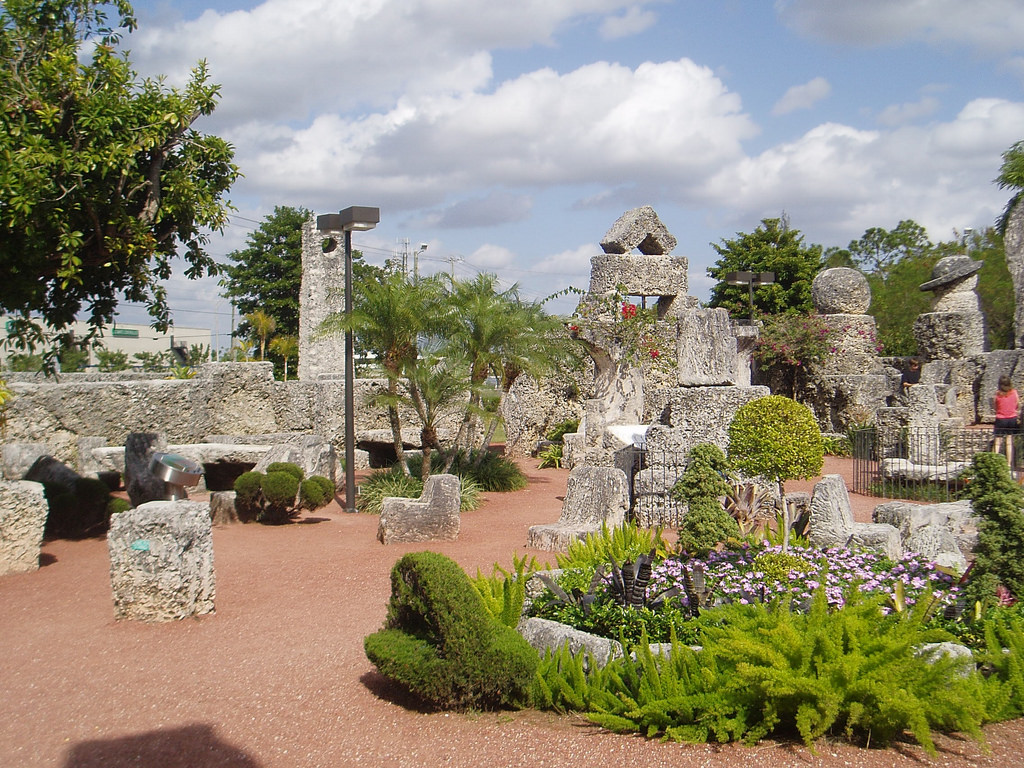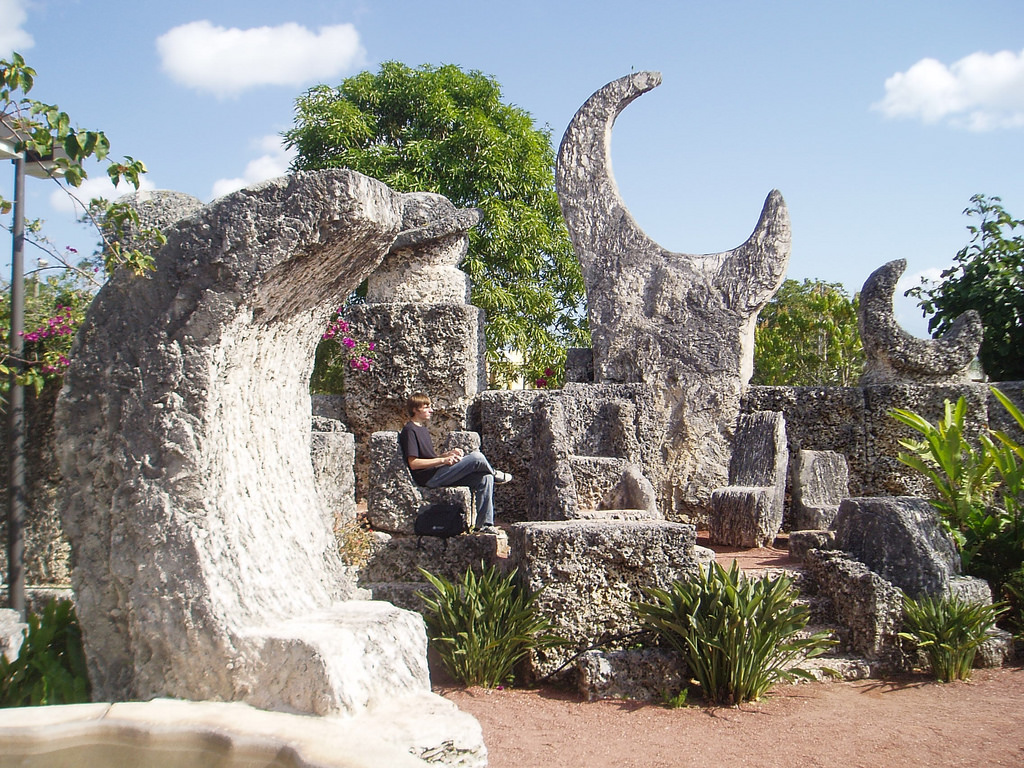This is not your usual castle. In fact, there is absolutely nothing usual at all about this little known architectural wonder. The tale of Coral Castle is filled with romance and unrequited love as well as personal determination and mysterious feats of human engineering.
It was 1923 when Edward Leedskalnin, a frail 100 pound, five-foot-tall man, who was deeply pining for the woman he loved and lost back in Latvia, began construction of Coral Castle. Over the next 28 years, until his death, he continued working alone and at night on his creation.
The remarkable structure is put together, inside and out, by hand-cut blocks of oolite limestone (often referred to as coral rock). The blocks of wall are 8′ tall by 4′ wide and 3′ thick. They are stacked without mortar to secure them; precision placing is the “concrete” that holds them together.
Ed worked in secret, under cover of darkness, so that his methods would not be seen by curious onlookers. He performed his construction feats without modern tools, and claimed to have an understanding of levitation, magnetism, and the secrets used to construct the pyramids. He used pulleys, and car axles, and simple tools to cut, carve, and stack the massive, 14-ton average blocks of stone with such tightness that it is said no light seeps in between the seams. They have certainly stood the test of time and hurricanes.
The interior design is like something out of a Flintstones cartoon. There are massive stone furnishings: beds, tables and chairs, and even rockers that easily move to and fro. There is a giant heart-shaped table and another shaped like Florida. There is a sundial for telling time and a telescope for viewing the heavens, all hand carved from stone.
While this is fun to think of as a neanderthal’s dream, it is hard to imagine that Ed’s “sweet sixteen” could have been happy living in this open air stone castle. No one knows for certain why she broke off the engagement the day before the nuptials were to commence, but Ed was considerably older than she, and there is no doubt that he was at least a little bit eccentric. She never did see the creation Ed constructed in her honor.

Flickr CC/lancearoundorlando
When development threatened his Florida City privacy in 1936, he spent the next three years moving what was completed up to that point ten miles away to Homestead. Since he started with the “interior” first, these were mostly the carvings of “furniture.” There are old tales of seeing the massive blocks traveling down US Route 1 on a homemade trailer, crafted from an old truck chassis, being towed by a friend’s tractor.
The entryway is an engineer’s marvel. It is secured by an 8-ton, 8-foot-tall revolving block of stone, balanced so precisely on a car axle, that a small child could effortlessly open it with a gentle push. The massive door is measured with such exactness as to sit within a quarter inch of the frame wall. When the axle and bearings had rusted and given way in 1986, engineers from around the world were consulted for the best options to repair it. It broke again in 2005 and, still, the greatest minds with the most recent technology could not achieve the same balance, and it now takes more effort to swing it open.
The outer walls, begun in 1940 after the interior was completed, display Ed’s fascination with astronomy by was fitted on top with celestial objects such as Saturn and a crescent moon. These are each carved from a single stone, up to 23′ tall and weighing up to 30 tons. There is a tower, where Ed resided, and even a 22-ton obelisk.
In 1951, at the age of 64, Ed got on a bus and headed for the hospital, leaving a sign on the door saying the same. He died three days later. Among his possessions of handmade tools was $3500 cash in $100 bills. This was Ed’s savings from giving tours for 10 to 25 cents a person over the years. In 1984, the National Register of Historic Places recognized the structure by its original name of Rock Gate Park. And, Billy Idol even used the location and made a tribute with his song, “Sweet Sixteen.” Though Edward Leedskalnin was never lucky in love, his legacy is built in stone, legend, and song.







